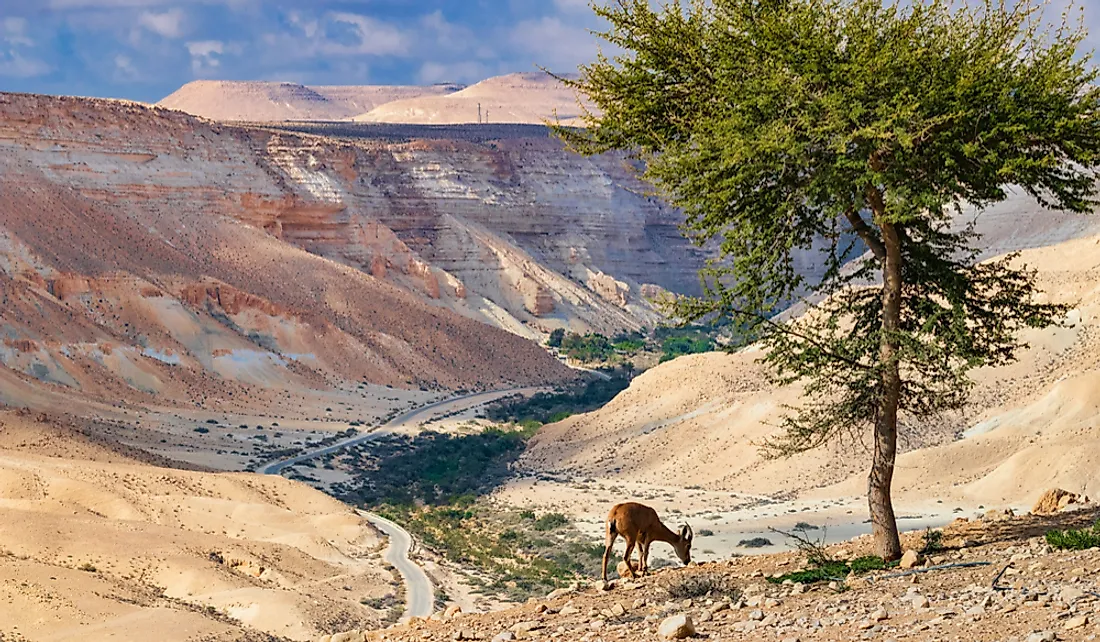Where Is The Negev Desert?

The Negev is a rocky desert that is situated in the southern parts of Israel. The Negev occupies over 55% of Israel’s land area (over 4,700sq miles). It is an inverted-triangular shaped region whose eastern boundary is in the valley of Arabah and western border is contiguous with the Sinai Peninsula. The Negev has various development towns like Mitzpe Ramon, Arad, and Dimon and numerous Bedouin cities. Eilat and the Gulf of Aqaba are situated in the southern end of the Negev. Beersheba is the largest city in the Negev with over 207,551 inhabitants. The first urbanized settlement in the region was built by a combination of the Edomite, Nabataean, Amorite, Amalekite, and the Canaanites groups in 2000 BCE. The desert was added to the present-day territory of Israel on July 10, 1922.
Geography
The Negev is composed of a mixture of rocky, brown dusty mountains that are interrupted by deep craters and wadis. It is a semi-desert and desert area that can be divided into five geographical areas (Arabah Valley, the high plateau, central, western, and the northern Negev). Western Negev has light sandy soil and receives 9.8 inches of rainfall annually. Northern Negev is quite fertile, and it gets 11.8 inches of rainfall every year. The dunes in this rocky desert can reach a maximum height of about 98.4 ft. Central Negev receives annual precipitation of about 7.87 inches. Central Negev has impervious soil that allows low water penetration. The high plateau region experiences extreme temperatures in winter and summer. The valley of Arabah stretches 112 miles from the Dead Sea to Eilat. The soil at Arabah Valley is quite inferior, and nothing can grow there without some special additives and irrigation.
Climate
Negev desert is an arid area which gets very little rain due to its position on the eastern side of the Sahara. Frost and snow are quite rare in the northern parts of Negev. Eilat receives no rain from June to September while Beersheba has three months (June-August) of no rainfall every year. Beersheba receives an average high temperature of 25.7°C annually and a record high of 46°C. Eilat receives an average high temperature of about 31.5°C and a low of approximately 19.4°C.
Fauna And Flora
Vegetation in the region is quite sparse with some plants and trees like Retama, Pistacia, and Acacia thriving in the Negev. Doum palm thrives on the southern parts of the desert. The Arabian leopard is an endangered species which can be found in southern parts of the region. The Crocidura Ramona (Negev shrew) is a mammal belonging to the Soricidae family that can only be found in this part of the world. The Testudo werneri (Ramon’s tortoise) is a critically endangered tortoise species that survive on the sands of central and western Negev.
Demography
Even though Negev desert occupies over 55% of Israel’s land, it was home to over 630,000 people (8.2% of the population) by 2010. Over 25% of the country’s residents are Bedouins while 75% (470,000) are Jews. Half of the Bedouin population resides in unrecognized villages while the rest live in various towns which the government built for them during the 1960s and 1980s like Rabat.











